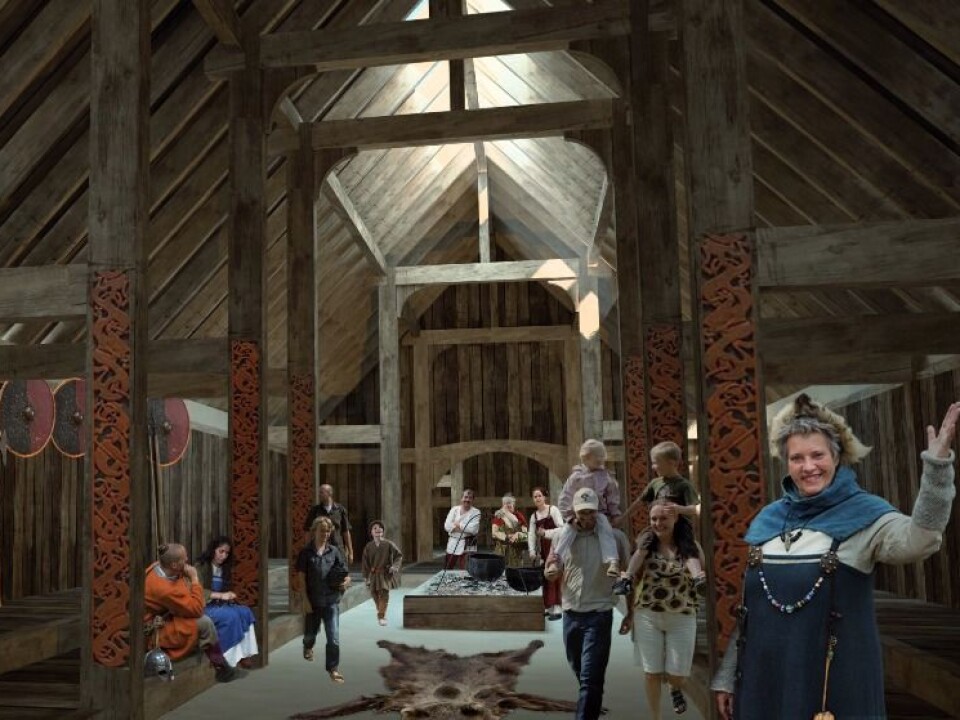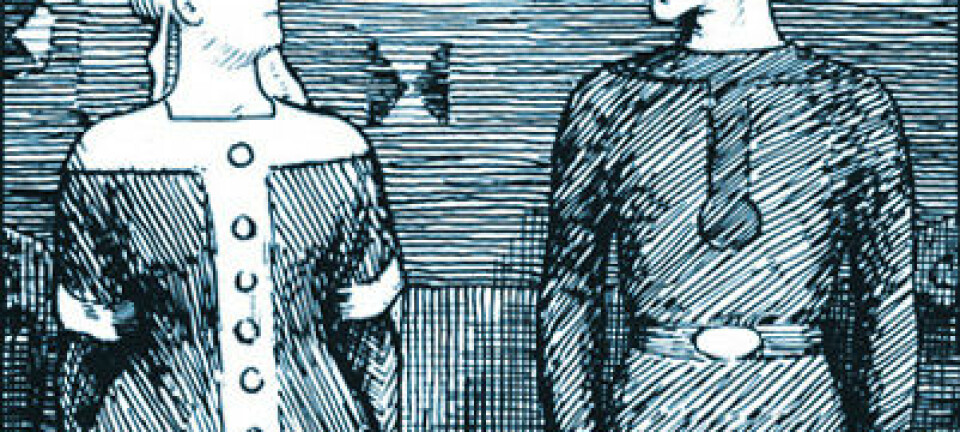
What colour did the Vikings paint their houses?
Archaeologists in Denmark are busy building one of the largest experimental archaeology reconstruction projects. But what colours would the Vikings have used?
Did Vikings paint their houses white or red? Which colours were popular, and when?
These questions were the focus of a furious debate among researchers during a seminar entitled “Colourful Vikings” hosted by the Centre for Historical-Archaelogical Research and Communication in Denmark (as also known as Sagnlandet Lejre).
Archaeologists at Sagnlandet Lejre are currently reconstructing a full sized royal Viking hall.
When finished, it will measure 60 metres long, be slightly oval shaped, and built from planks of oak. But exactly what colours the original hall was painted with, remains a mystery.
Eighteenth century preservationist repainted Viking objects

Archaeologists have found a range of wooden Viking objects that have retained some colour, and preserve some evidence of the fashions of the day. But even so, we cannot be completely sure about the exact colours used, says Mads Christensen, a chemist from the National Museum of Denmark.
He refers to objects found in the tomb of Gorm the Old, one of Denmark’s earliest kings, in west Denmark.
“Various wooden objects found in Gorm the Old’s tomb in Jelling were probably painted with white, red, green, black, and yellow. They’re dated to around 960 CE,” says Christensen.
The colours of these 1,000-year-old pieces of timber are no longer visible, but Christensen was able to chemically extract traces of pigment from the wood. But he still cannot tell how intense the original colours might have been.
“We can determine that the colours were there, but we can’t tell how intense they were,” he says.
On top of this, the objects were likely repainted with a protective layer by a well-meaning conservationist in the eighteenth century, which somewhat muddles the results.
Read More: Fashionable Vikings loved colours, fur, and silk
Quicklime was probably a popular choice
Other archaeologists take another view: that Viking houses, or at least royal halls, were painted entirely white.
“We found traces of clay with white chalk at the excavations of the Viking halls in Tissø and Lejre. So we think that the houses were covered with quicklime,” says Josefine Franck Bican, a research assistant at the National Museum of Denmark.
This would make a lot of sense, she says.
A white house would be visible from far away, making it a suitable status symbol and landmark. Using quicklime both in and outside the house would have provided effective insulation and a good indoor climate on top of providing light during the dark winter months.
During the Viking colour seminar, Bican ignited another lively discussion when she suggested that the royal hall most likely had windows.
Read More: New Viking graves discovered in Denmark
Glass beads suggest a change in fashion
In any event, it is likely that something exciting happened with colours during the Viking period, says Henriette Lyngstrøm, a Ph.D. student at the Saxo Institute at the University of Copenhagen, Denmark.
A comparison of coloured glass beads from before the Viking age, indicate that a shift in colour fashion took place, she says.
“When we compare glass beads dated to 600 and 700 CE, there is a clear difference in colour and pattern. Beads dated to 600 CE are predominantly red-brown and have a single colour, whereas beads from 700 CE are variegated with strong colours,” says Lyngstrøm.
The beads cannot tell us anything specific about the Viking period, which was between 800 and 1050 CE. But Lyngstrøm thinks that the early shift in colours might have influenced the Vikings later on.
Read More: Unique jewellery from the British Isles found in Danish Viking grave
“Did they perceive colours as we do?”
Many of the researchers questioned the whole premise of reconstructing colours in the Viking hall. How can we ever know whether we agree with the Vikings about what a colour is?
“There are, for example, many historical sources that suggest the Romans perceived colours differently than we do today,” says Amalie Skovmøller, a Ph.D. student at the Saxo Institute at the University of Copenhagen.
Romans may have perceived colour more as an expression of different hues and nuances, than as an actual perception of red, yellow, or green.
“For example, the concept of purple is used in historical texts to both describe the surface of the sea and a glow in a woman's eyes and not just the colour that we associate purple with today,” says Skovmøller.
The same could apply to the Vikings, she says.
Read More: Photo gallery: The six styles of Viking art
Can we ever create a truly authentic reconstruction?
But should the archaeologists really be so concerned with figuring out how such a hall may or may not have been painted? During the seminar, discussions often touched on the underlying premise of such an archaeological reconstruction.
“What does ‘authentic’ mean anyway?” says Tobias Jespersen from the Saxo Institute, referring to the ongoing discussion among archaeologists as to whether any reconstruction project can be considered truly authentic.
Jespersen has just written his master’s thesis on the subject.
“Regardless of which colour we choose, the reconstruction will always be inauthentic. Our task as academics is to give the best estimate of a previously impossible task--to recreate the past,” he says.
One suggestion would be to paint the hall in different colours to reflect different time periods.
Archaeologists behind the reconstruction will continue to investigate.
-------------
Read the Danish version of this article on Videnskab.dk
Translated by: Catherine Jex









